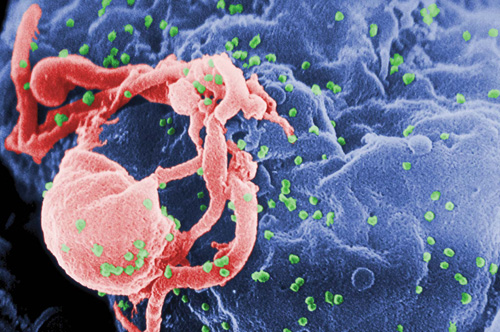Probing the Provirus
Research Question
It has long been known that effective antiretroviral therapy (ART) has relatively little impact on the reservoir of persistent virus—a major impediment to curing HIV. However, it is possible that the true impact of ART on this persistent reservoir may be masked by differential effects on two forms of provirus, the stretch of viral DNA that inserts into the DNA of infected cells.
Intact provirus found in persistent reservoir serves as an instruction manual for the creation of new virions. If the provirus is defective, it does not provide sufficient instructions to make infectious virus and can be confused with intact provirus, depending on which tests are used to measure proviral DNA.
To understand the actual effects of ART on the reservoir of intact provirus, researchers used the best test to date to differentiate between intact and defective provirus.
Findings

Image: Public Health Image Library
Researchers followed 81 people living with HIV who suppressed their virus using ART, periodically measuring provirus. The impact of ART on intact provirus was most potent during the first seven years of treatment. During this time, the intact provirus decreased significantly when compared to defective provirus. After seven years, the decrease was less marked.
Researchers then studied various other cofactors such as age, race, and gender, including transgender individuals—finding that only CD4 counts were significantly associated with a decrease in intact provirus. Those who began ART when their CD4 counts were relatively high, or had lower levels of intact proviruses from the start, had faster rates of decline of these intact proviruses.
Impact
The decrease in intact provirus could suggest that despite potent ART, the immune system might be able to differentiate between cells infected with intact provirus and those with defective provirus. Documenting how the reservoirs of intact vs. defective proviruses respond differently to ART and assessing a subset of individuals—about nine percent of the population studied—who had very rapid declines in intact proviruses may assist in future cure strategies.
amfAR’s Role
amfAR funds several researchers involved in this study.
Original Article
http://www.ncbi.nlm.nih.gov/pubmed/32045386
Dr. Laurence is amfAR’s senior scientific consultant.
Share This:
